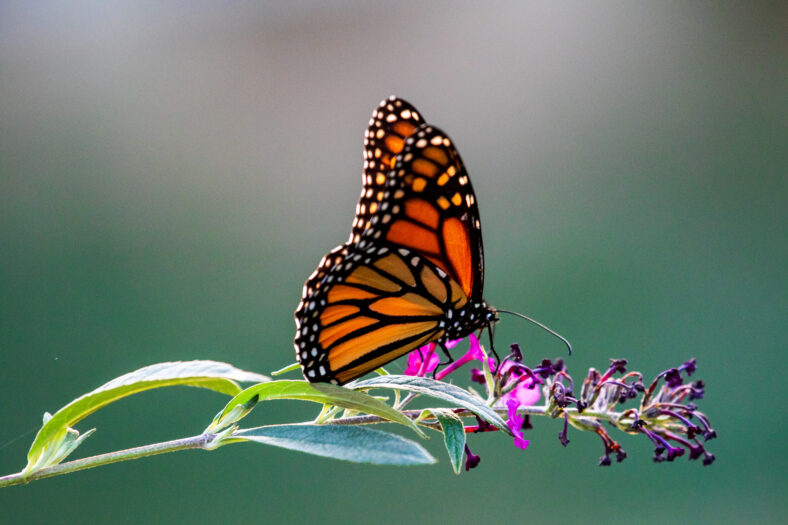Butterflies Pick Up Pollen With The Help Of Static Electricity

As they fly, butterflies and moths build up static electricity, allowing them to pick up pollen without directly touching flowers, according to a 2024 study.
In the past, studies have shown that bumblebees, honeybees, and hummingbirds can pull pollen from flowers with electric charges.
In the latest study on insects and electrostatic charges, researchers wanted to see if butterflies and moths could do the same.
Their charges had not been measured before. So, they looked at 11 different species from five continents, for a total of 269 individuals.
The research team set up a ring electrode system outside the exit of a container for free-flying butterflies in order to measure their charges. For other insects, the team tethered them and dropped them through the ring after they flew.
All the butterflies and moths measured in the study carried an electrical charge. The charge was positive for most of them.
When computer simulations were run, the team found that their average charge was strong enough to lift 100 grains of pollen at least six millimeters in the air in less than a second.
Their charges were stronger than those measured in other insects and would also be strong enough to make pollination happen without touching flowers. This ability likely increases their effectiveness as pollinators.
In addition, the researchers determined that bigger insects had higher charges. Their larger surface areas let them build up more charge. The differences in charge between species could be an evolutionary adaptation.

Sign up for Chip Chick’s newsletter and get stories like this delivered to your inbox.
Moths and tropical butterflies had lower charges than those in temperate climates. This may be because tropical insects have more predators, and those predators could possibly detect their charge. Nocturnal insects also had lower charges, which may be due to greater predation risks at night.
“A clearer picture is developing of how the influence of static electricity in pollination may be very powerful and widespread,” said Dr. Sam England, the lead author of the study from the University of Bristol’s School of Biological Sciences.
“By establishing electrostatic charging as a trait upon which evolution can act, it opens up a great deal of questions about how and why natural selection might lead to animals benefitting or suffering from the amount of static electricity that they accumulate.”
The discovery has implications for technologies to artificially increase electrostatic charges to improve pollination rates in natural and agricultural settings.
There are more than 100,000 butterfly and moth species in the world, so the 11 species that were studied are too few to really draw solid conclusions.
In the future, the researchers hope to conduct a wider survey of all different kinds of species to better understand evolution and static electricity.
The details of the study were published in the Journal of the Royal Society Interface.
More About:News





